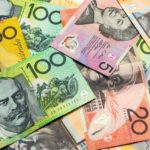 Yesterday’s trade (in GMT terms) saw USD/CAD within the range of 1.3131-1.3237. The pair closed at 1.3160, edging down 0.27% compared to Wednesdays close. It has been the 160th drop in the past 339 trading days. The daily high has been a level unseen since July 27th, when a high of 1.3254 was registered. The major pair has pared its advance to 0.42% so far during the current month, following a 0.59% gain in August.
Yesterday’s trade (in GMT terms) saw USD/CAD within the range of 1.3131-1.3237. The pair closed at 1.3160, edging down 0.27% compared to Wednesdays close. It has been the 160th drop in the past 339 trading days. The daily high has been a level unseen since July 27th, when a high of 1.3254 was registered. The major pair has pared its advance to 0.42% so far during the current month, following a 0.59% gain in August.
At 8:22 GMT today USD/CAD was inching up 0.03% on the day to trade at 1.3164. The pair touched a daily high at 1.3178 during early European trade, undershooting the daily R2 level, and a daily low at 1.3142 during the mid phase of the Asian trading session.
Meanwhile, crude oil futures marked their 91st gain out of the past 193 trading days on September 15th. Oil for October delivery went up as high as $44.34 per barrel and closed at $43.91, rising 0.75% compared to Wednesday’s close. As of 8:19 GMT today the commodity was losing 1.07% to trade at $43.44, after going down as low as $43.36 per barrel earlier. Crude oil prices and CAD valuation tend to be strongly positively correlated.
On Friday USD/CAD trading may be influenced by the following macroeconomic reports as listed below.
Fundamentals
United States
Consumer Price Index
The annualized consumer inflation in the United States probably accelerated to 1.0% in August, according to market expectations, from 0.8% in the preceding month. The latter has been the lowest annual inflation since December 2015. In monthly terms, the Consumer Price Index (CPI) probably rose 0.1% in August, according to the market consensus, following a flat performance in the prior month.
In July, cost of food rose at an annual rate of 0.2%, slowing down from a 0.3% surge in June. It has been the lowest food inflation since March 2010. Cost of transportation services rose 3% year-on-year in July, or at the same rate as in June, while cost of shelter went up 3.3% year-on-year, decelerating from 3.5% in June, and cost of medical care soared at an annual 4.1%, accelerating from 3.8% in June, according to the report by the Bureau of Labor Statistics. On the other hand, cost of energy fell 10.9% in July compared to the same month a year earlier, following a slower (9.4%) drop in June.
The annualized core consumer inflation, which is stripped of prices of food and energy, probably remained stable at 2.2% in August, according to market expectations. In June the Core CPI rose 2.3% year-on-year.
If the general CPI tends to approach the inflation objective, set by the Federal Reserve and considered as providing price stability, or a level below but close to 2%, this would usually heighten the appeal of the US dollar, as it increases the probability of monetary policy tightening.
The Bureau of Labor Statistics is to release the official CPI report at 12:30 GMT.
Reuters/Michigan Consumer Sentiment Index – preliminary reading
The monthly survey by Thomson Reuters and the University of Michigan may show that consumer confidence in the United States improved in September. The preliminary reading of the corresponding index, which usually comes out two weeks ahead of the final data, probably reached 90.8 during the current month from a final 89.8 in August. The latter came below the preliminary reading of 90.4, which was reported on August 12th.
The sub-index of current economic conditions increased to a final reading of 107.0 in August from a preliminary value of 106.1. In July this barometer was reported at a final 109.0.
The sub-index of consumer expectations came in at a reading of 78.7, down from a preliminary value of 80.3 in August, but up from a final reading of 77.8 registered in July.
Participants in the August survey expected that the rate of inflation will be at 2.5% during the next year, or matching the rate in the preliminary release, but down from a rate of 2.7% in the July survey.
In case the gauge of consumer sentiment met or even exceeded expectations in September, this would have a moderate-to-strong bullish effect on the US Dollar. The preliminary reading is due out at 14:00 GMT.
Canada
Manufacturing Sales
Manufacturing sales in Canada probably rose for a second straight month in July, going up at a monthly rate of 1.0%, according to market expectations. In June compared to May shipments were 0.8% higher. The Monthly Survey of Manufacturing features statistical data regarding sales of finished goods, inventories, unfilled orders and new orders in Canada’s sector of manufacturing. About 10 500 items and 27 000 companies are encompassed.
Manufacturing sales are considered as an indicator of demand in the future. An increase in the number of goods and unsold inventories suggests, that demand is insufficient and vice versa. At the same time, an increase in sales (shipments) suggests a stronger demand. Therefore, in case shipments rose at a faster pace than anticipated in July, this might have a limited-to-moderate bullish effect on the Canadian dollar. Statistics Canada will release the official data at 12:30 GMT.
Bond Yield Spread
The yield on Canada’s 2-year government bonds went up as high as 0.597% on September 15th, after which it closed at 0.575% to lose 1.1 basis points (0.011 percentage point) compared to September 14th.
Meanwhile, the yield on US 2-year government bonds climbed as high as 0.770% on September 15th, after which it fell to 0.734% at the close to lose 2.8 basis points (0.028 percentage point) compared to September 14th.
The spread between 2-year US and 2-year Canadian bond yields, which reflects the flow of funds in a short term, narrowed to 0.159% on September 15th from 0.176% on September 14th. The September 15th yield spread has been the lowest one since August 18th, when the difference was 0.137%.
Daily, Weekly and Monthly Pivot Levels
By employing the Camarilla calculation method, the daily levels of importance for USD/CAD are presented as follows:
R1 – 1.3170
R2 – 1.3179
R3 (Range Resistance – Sell) – 1.3189
R4 (Long Breakout) – 1.3218
R5 (Breakout Target 1) – 1.3252
R6 (Breakout Target 2) – 1.3266
S1 – 1.3150
S2 – 1.3141
S3 (Range Support – Buy) – 1.3131
S4 (Short Breakout) – 1.3102
S5 (Breakout Target 1) – 1.3068
S6 (Breakout Target 2) – 1.3054
By using the traditional method of calculation, the weekly levels of importance for USD/CAD are presented as follows:
Central Pivot Point – 1.2976
R1 – 1.3128
R2 – 1.3207
R3 – 1.3359
R4 – 1.3512
S1 – 1.2897
S2 – 1.2745
S3 – 1.2666
S4 – 1.2588
In monthly terms, for USD/CAD we have the following pivots:
Central Pivot Point – 1.3024
R1 – 1.3283
R2 – 1.3462
R3 – 1.3721
R4 – 1.3981
S1 – 1.2845
S2 – 1.2586
S3 – 1.2407
S4 – 1.2229





